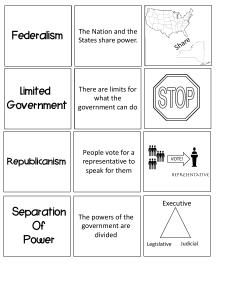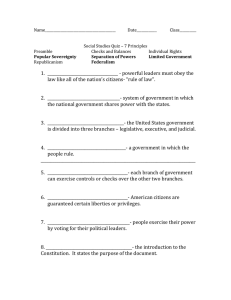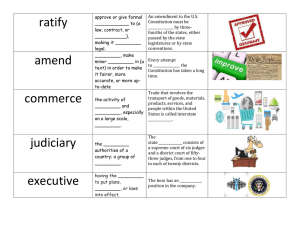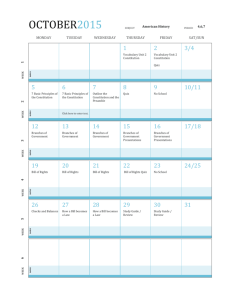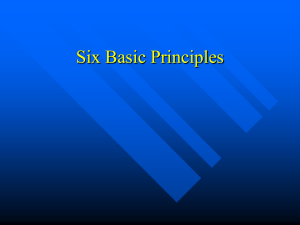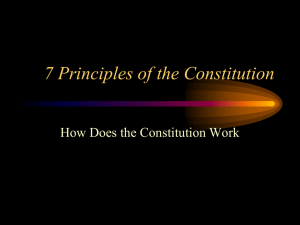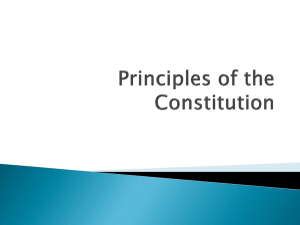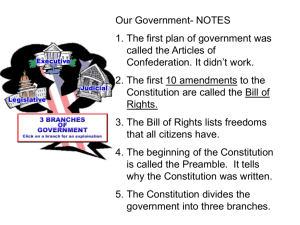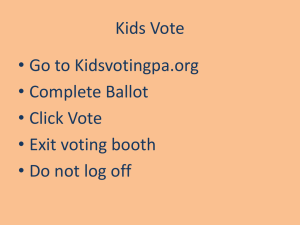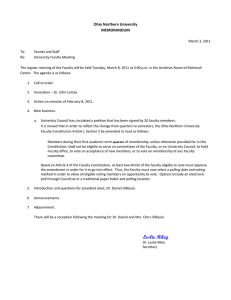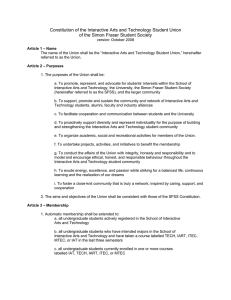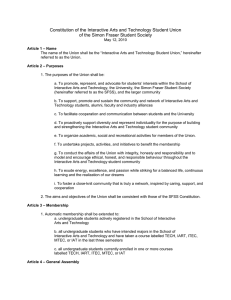7 Principles of the Constitution
advertisement
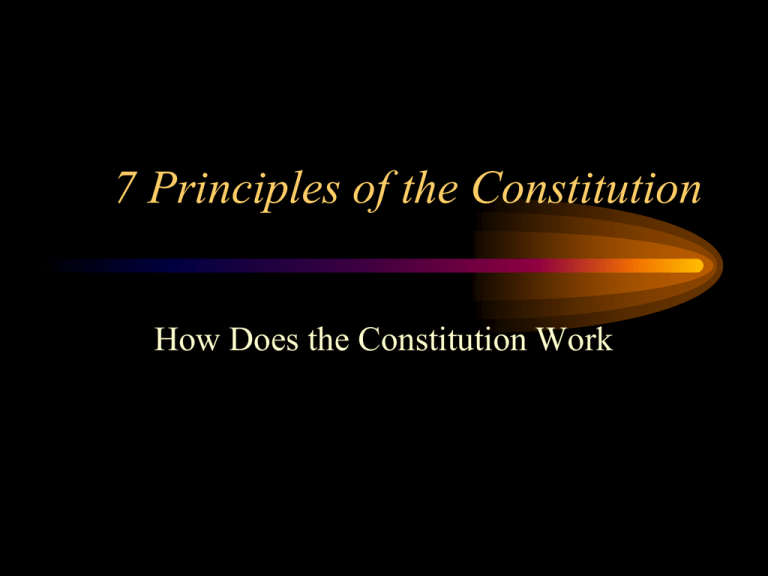
7 Principles of the Constitution How Does the Constitution Work Popular Sovereignty • Definition – A government in which the people rule. • This means they participate by voting. • Example – People can run for office, campaign for individuals who run, or protest decisions made by others. Limited Government • Definition – The governments power is limited by the Constitution. • This keeps the Government from becoming too powerful and acting like a King who has unlimited power. Separation of Power • Definition – Divides the roles of government into 3 branches, Executive, Legislative, and Judicial. • So that one person or one group of people do not control everything and become to powerful. Check and Balances • Definition – Each of the 3 branches of government has a little control, or check, on the other 2 branches. • This balances power between the 3, ensuring that none of the branches get out of control. • Example – Federal judges are nominated by the President, but have to be approved by Congress. Federalism • Definition – A system of government in which powers are shared by state and a national government. • A national government is needed to keep the union together, regulate trade, national defense, and many other important things. Republicanism • Definition – People vote for people to represent their views. (Representative Government) • You can’t have the whole population vote on everything, so you vote on people who share similar beliefs and allow them to vote. Individual Rights • Definition – -Rights and privileges that every person is born with and that the Government cannot take away. • The Bill of Rights, the first Ten Amendments, was created to protect these rights Visual Representation • I will split you up into 7 groups. Each group will draw a picture that represents your principle of Government
